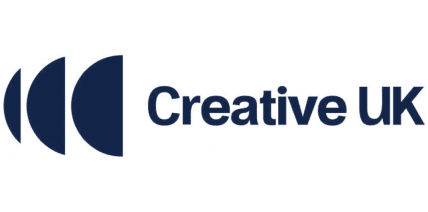Where do NFTs (non-fungible tokens) fit with the creative industry landscape as a whole? The most obvious is with digital art but the scope and opportunities are much wider than that. Blockchain technology and NFTs are giving artists and content creators a unique opportunity to monetise their work.
“For example, artists no longer have to rely on galleries or auction houses to sell their art. Instead, the artist can sell it directly to the consumer as an NFT, which also lets them keep more of the profits. In addition, artists can program in royalties so they’ll receive a percentage of sales whenever their art is sold to a new owner. This is an attractive feature as artists generally do not receive future proceeds after their art is first sold.’ Interesting in reading more about NFTs?
Check our blog post about what exactly is an NFT?
Creative Takeaways
- Empowers creators – Direct sales, royalties, more control.
- New revenue streams – Art, music, gaming, film, and TV.
- Digital ownership – Scarcity, verifiable, counterfeit-proof.
- Funding innovation – NFT-based project financing.
- High-risk investment – Research, caution, future potential.
Table of contents
- Creative Takeaways
- 1. NFTs could revolutionise the gaming, collectables and content industry
- 2. NFT in the music industry
- 3. Non fungible tokens in film and television
- 4. Benefits of NFTs in the creative industry
- 5. NFT digital arts examples in the creative sector
- 6. How do NFTs work: should you create NFTs or buy NFTs?
1. NFTs could revolutionise the gaming, collectables and content industry
NFTs are valuable to their owners and collectors because they are generally one of a kind, or at least part of a very limited run, with unique identifying codes – essentially creating digital scarcity.
“One of the main benefits of owning a digital collectable versus a physical collectable like a Pokemon card or rare minted coin is that each NFT contains distinguishing information that makes it both distinct from any other NFT and easily verifiable. This makes the creation and circulation of fake collectables pointless because each item can be traced back to the original issuer.’
The purchase of in-game items (play-to-earn) to help the gamer build their world are a clear parallel with NFTs in a broader business investment context.
NFTs allow content creators and game developers to generate new revenue streams that cannot be taken away from them like other forms of digital goods. This is because they’re not taking up any space or bandwidth as files do, which means more profits for people who create to sell online. NFTs also enable game developers to create new worlds where everything you see is an NFT that can be owned by someone else in the world.
This means more control for people who are creating online content.
2. NFT in the music industry
NFTs might play an interesting role in the future of the music industry. They allow content creators to keep more control over their work and get paid directly by fans. This cuts out the need for a middleman, like a record label, who takes a large chunk of the profits.
“There might be a considerable redistribution of wealth in favour of artists and away from major labels, creating an incentive to invest more in music production. It will also allow direct payments between independent musicians who are not commercially successful but who have a large following on the web and their fans.
This is an exciting development for the music industry. It gives artists more control over their work and allows them to get paid directly by their fans. This could lead to a new era of creativity and innovation in music.
3. Non fungible tokens in film and television
In May 2018, 20th Century Fox partnered with Atom Tickets and released limited-edition Deadpool 2 digital posters to promote the film. The posters were available from OpenSea and the GFT exchange.
A 2016 Oscar-nominated documentary “Claude Lanzmann: Spectres of the Shoah” was released for the first time as an NFT. The doc aired on HBO but was never made available for public purchase physically or digitally – each of the 10 first edition copies made available were sold for a type of cryptocurrency equal to around US$375,000.
In November 2021, film director Quentin Tarantino released seven NFTs based on uncut scenes of Pulp Fiction. Miramax subsequently filed a lawsuit claiming that their film rights were violated. It will be interesting to see how the courts rule on Miramax’s case against Tarantino.
Will they decide that NFTs can’t be used to infringe on copyright? Or will they find that since the scenes were never released in theatres, they are fair game for NFT distribution?
Only time will tell. In any event, it’s clear that NFTs are starting to make waves in the movie industry. This is just the beginning.
The NFT space also brings new ways for producers to raise finance for their projects. US film financier Forest Road Company recently closed a US$20m fund with the aim of helping independent producers monetise content, turning new and existing intellectual property into NFTs and allowing them to source meaningful capital through a new revenue stream.
“The $20m fund makes pre-production investments in exchange for the right to sell associated collectables using NFTs – the producers will be able to participate in the NFT royalty stream once Forest Road recoups its pre-production investment.
Alongside attracting investors willing to provide pre-production finance, selling digital collectibles (artwork, clips of a film’s score) could allow the producers themselves to raise money for new productions from fans, in a similar way to crowdfunding.”
4. Benefits of NFTs in the creative industry
Some industries and sectors are ideal candidates to explore NFTs.
For smaller enterprises, NFTs could offer a range of opportunities to secure digital assets and create new products for this burgeoning marketplace. However, as we have seen with cryptocurrencies, care must be taken when any investment is made.

5. NFT digital arts examples in the creative sector
Art: Beeple’s “Everydays: The First 5000 Days”
Beeple’s purely NFT digital artwork was the first NFT to be sold at a major auction house. Christie’s auctioned off this asset for a staggering $69 million!
Everydays: The First 5000 Days is a digital artwork which Beeple created daily over the years. It represents the evolution of his artistic style from surreal to political and pop culture themes.
TV & Film: William Shatner’s memorabilia
The star trek actor William Shatner has been a blockchain advocate for some time. He released a collection of NFTs of personal memorabilia from his 60-year career selling 125,000 units in 9 minutes.
Music: Grimes WarNymph
Singer-songwriter Grimes made $5.8 million selling a collection of 10 NFTs. The highest-selling asset was a one-a-kind video called “Death of the Old” that sold for $389,000.
Product: Glenfiddich whisky
Distillers William Grant and Son recently sold 15 bottles of 46-year-old Glenfiddich whisky for $18,000 a piece, and each one was accompanied by its own NFT artistic impression of the bottle. The NFT allows the owner to show off their purchase and acts as a counterfeit-proof certificate of ownership.
Words: Jack Dorsey’s first Tweet
One of the most famous NFTs is a tweet from Twitter CEO Jack Dorsey. He sold his very first Tweet, from way back on Twitter’s launch day in March 2006, for nearly $3 million!
Sports: NBA shots sports collectables
Top Shot is an NFT marketplace for buying, selling, and trading videos of NBA moments – their slogan is “Own the NBA’s Best Plays.” LeBron James dunking against the Houston Rockets is currently their highest-earning asset, selling for $387,000.
6. How do NFTs work: should you create NFTs or buy NFTs?
“NFTs are risky because their future is uncertain, and we don’t yet have a lot of history to judge their performance,” says Arry Yu, chair of the Washington Technology Industry Association Cascadia Blockchain Council and managing director of Yellow Umbrella Ventures. “Since NFTs are so new, it may be worth investing small amounts to try it out for now.”
Like any transaction of this kind, whether you want to invest in NFTs is a largely personal decision. If you have money or crypto to spare, it may be worth considering, especially if a particular NFT holds meaning for you.
Bear in mind an NFT is based on what someone else is willing to pay for it – so the demand will drive the price.
When it comes to re-sale there is no guarantee you will be able to sell it for what you bought it for, let alone make a profit on the investment.
As with any investment, do your research, understand the risks and practice caution. You can also contact us as we can give you advice on how to deal with NFTs.
Our third article in this NFT series goes through the process of how to create and market an NFT.








